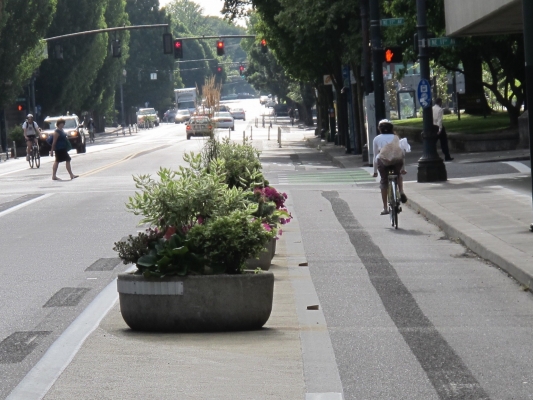Watch video
View slides
Summary: Urban bicyclists’ uptake of traffic-related air pollution is still not well quantified, due to a lack of direct measurements of uptake and a lack of analysis of the variation in uptake. This paper describes and establishes the feasibility of a novel method for measuring bicyclists’ uptake of volatile organic compounds (VOC) by sampling breath concentrations. Early results from the data set demonstrate the ability of the proposed method to generate findings for transportation analysis, with statistically significant exposure and uptake differences from bicycling on arterial versus bikeway facilities for several traffic-related VOC. These results provide the first empirical evidence that the usage of bikeways (or greenways) by bicyclists within an urban environment can significantly reduce uptake of dangerous traffic-related gas pollutants. Dynamic concentration and respiration data reveal unfavorable correlations from a health impacts perspective, where bicyclists’ respiration and travel time are greater at higher-concentration locations on already high-concentration roadways (arterials).
Bio: Alex Bigazzi is a Ph.D. candidate in Transportation Engineering at PSU, where he is also teaching a class on transportation emissions modeling....


